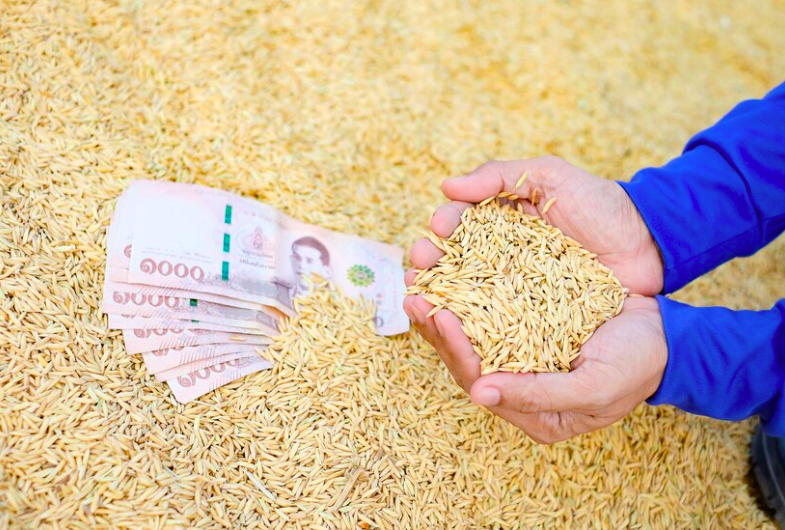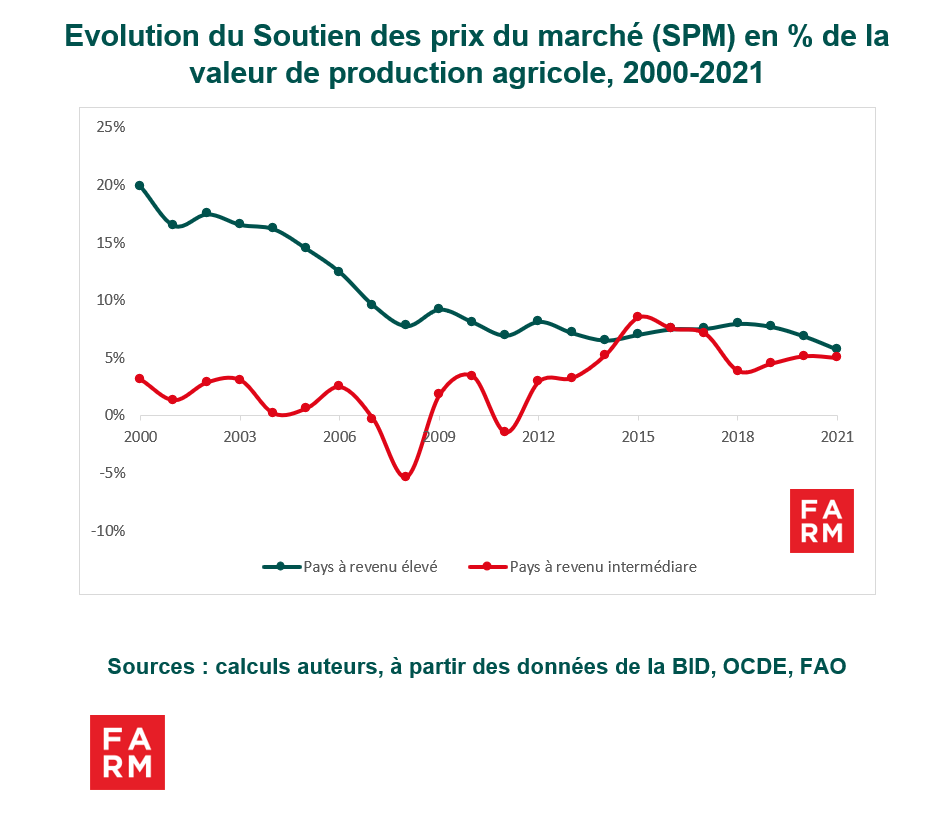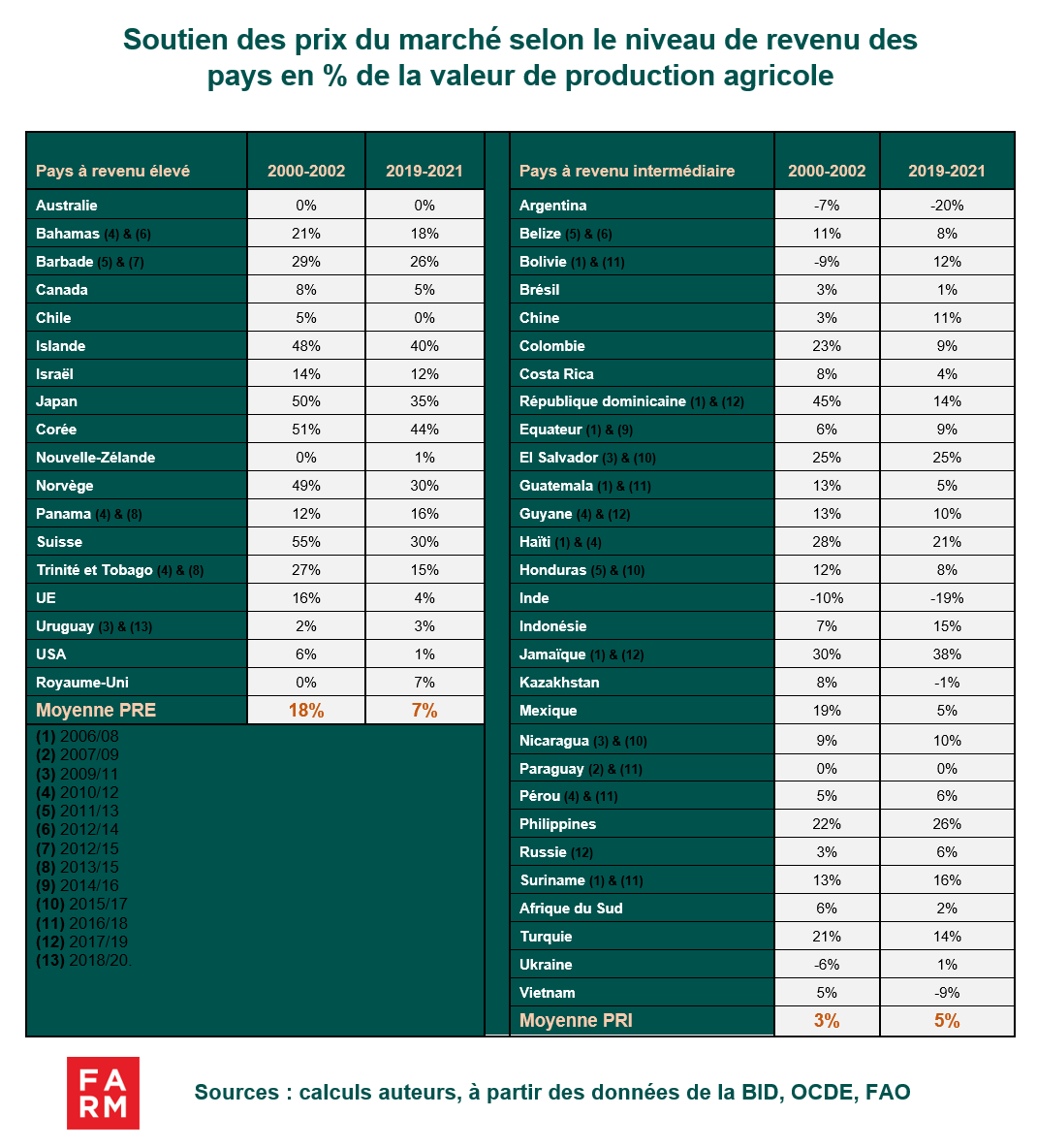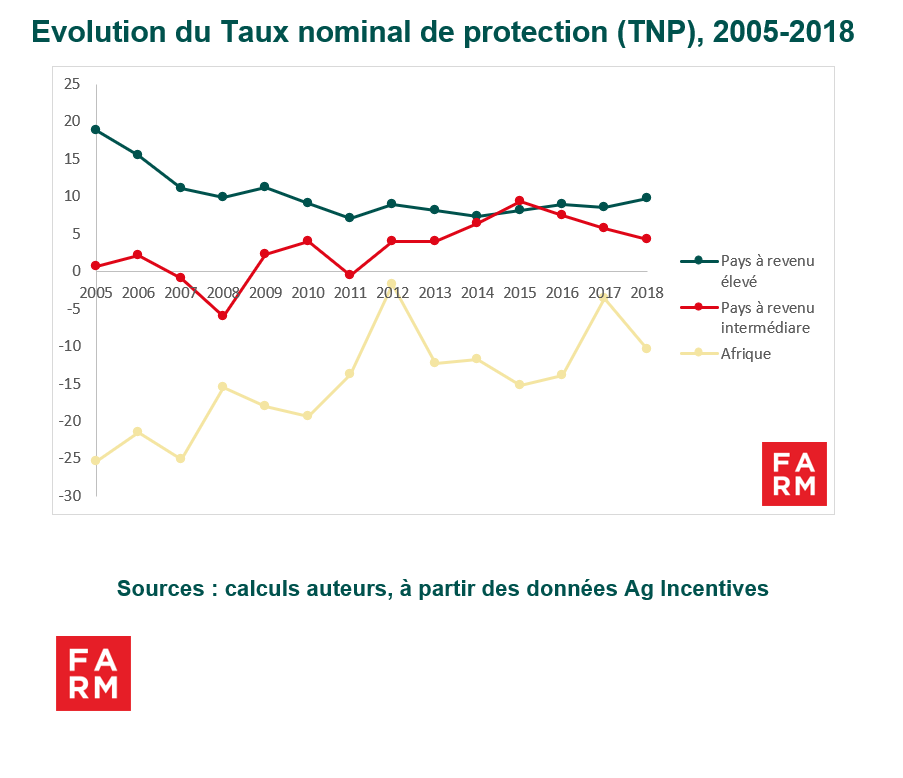Towards a convergence of market price support between rich and emerging countries
Agricultural price support measures are the most criticized type of agricultural support policy at the World Trade Organization (WTO). Yet, in a large majority of countries, they remain the main form of aid provided to producers, despite numerous trade agreements promoting liberalization. What is the current state of market price support for agricultural products worldwide? A major finding: a convergence of support levels between high- and middle-income countries, which contrasts with weak protection of African agriculture.

There FARM Foundation launched in December 2022 a Observatory global public support for agriculture and food, which allows us to compare the gaps in support across the planet. After analyzing the Public expenditure on support for agriculture and food (DPAA)), let's look at another indicator, market price support.
Market Price Support (MPS): What are we talking about?
As calculated by the OECD, the MPS expresses the monetary value of agricultural price support. Broadly speaking, the MPS translates, for each agricultural product, the gap between the domestic market price and the world price multiplied by the volume of the product. This price gap is determined in particular by border protections, health regulations, taxes, and processing, transport, and distribution costs that affect products between the farm and the wholesale or retail market. A negative MPS means that producers receive prices lower, on average, than the world reference prices. Conversely, a positive MPS will indicate prices paid to producers higher than prices paid on international markets.
Depending on whether the MPS is positive or negative, the price received by the producer is higher or lower than the prices paid on international markets. MPS can therefore be considered as an indirect measure of import protection. The more positive it is, the more the producer is protected from competition from imported products. The more negative it is, the less so. As currently available from the FARM Observatory, MPS data are incomplete and do not yet cover sub-Saharan African countries. Therefore, this MPS analysis focuses only on high- and middle-income countries (see in the methodological note the list of countries concerned). The question of price support in African countries is, however, addressed, but through another indicator: the nominal rate of protection, calculated by the Ag Incentives consortium.

A convergence of market price supports
In recent decades, the level of PMS has tended to decrease significantly in high-income countries, while gradually increasing in middle-income countries. As indicated by the graph, the average gap between these two categories of countries has narrowed considerably over time and appears to have almost closed in 2021. Indeed, this gap in the MPS, expressed as a percentage of the value of agricultural production, fell on average from 15 % in 2000-2002, to only 2 % in 2019-2021. The net decline in the MPS in high-income countries could be explained, on the one hand, by agricultural policy reforms from the end of the 1980s and, on the other hand, by the constraints resulting from the Marrakech Agreement on agriculture, in 1994 at the WTO. With regard to middle-income countries, this observation could signify a desire to strengthen or improve food security and/or the foundations for a structural transformation of economies.

However, there are significant disparities in MPS, particularly among middle-income countries. It should be noted that trends by income class are averages, which conceal significant variations within each country category. Thus, the weight of certain agricultural giants, due to their support intensity and the size of their agriculture, influences the average for these categories. This is the case, for example, of China, Brazil, and India among middle-income countries.
Why a negative SPM for some middle-income countries?
The analysis of the painting points out five middle-income countries that have negative MPS: Argentina, India, Kazakhstan, Ukraine, and Vietnam. This situation indicates that prices paid to producers in these countries are lower than world prices. This can be interpreted as an indirect levy or implicit taxation of producers. Negative MPS can be explained mainly by market inefficiencies (high processing and transport costs, monopoly rents, etc.), or regulations on the marketing of certain products (India) and export taxes (Argentina). These negative MPS give rise to transfers from producers to consumers and the State (in the form of taxes levied when the product is exported). For the period 2019-2021, negative MPS represented on average nearly 20% of the value of agricultural production in Argentina and India. Producers in these countries are heavily taxed for the benefit of consumers who benefit from low prices on basic products.
Africa: relatively unprotected agriculture
Since data are not available for African countries, we use the nominal rate of protection (NRP) to analyze agricultural price support. It expresses, for each agricultural product, the difference between the price paid to the producer and the border price, as a percentage of the border price. A negative NRP indicates that the producer is being "taxed" by the policies implemented and/or that existing protections are ineffective.

Thanks in part to strong import protection, agricultural price support is higher in high- and middle-income countries than in African countries. Moreover, it can be seen that the Nominal Rate of Protection in Africa remained negative throughout the period 2005-2018. In 2018, this Nominal Rate of Protection (NRP) in high-income countries was on average 30 percentage points higher than in Africa, compared to 5 percentage points higher than in middle-income countries. This change in the NRP shows that African agriculture is relatively unprotected and to a lesser extent than in other developing regions. (see FARM's study on import protections)This observation is all the more important since Public expenditure on agriculture and food (DPAA) is also much lower in African countries.
This negative NPT means that African governments are primarily protecting consumers to the detriment of agricultural producers. Indeed, sub-Saharan African states have long maintained, against the agricultural sector, an "urban bias" which resulted in relatively low customs duties - priority being given to supplying cities with imported products -, taxation of exported agricultural products, etc.. This situation results in African producers facing competition from low-cost imported products from countries or regions where agricultural productivity is considerably higher. This is all the more so since a number of these countries – particularly the Member States of the European Union, the United States, but also India and China – heavily subsidize their agriculture, often for a long time, which has also allowed them to build comparative advantages in this sector. However, there is a strong correlation, in different regions of the world, between the elimination of the urban, anti-agricultural bias and the level of development of several emerging countries, particularly in Asia.
Should agricultural price support be increased in Africa?
Asking this question means reopening the thorny debate on the protection of African agriculture. This debate is particularly important in the context of the redefinition of the Africa-Europe partnership and the renegotiation of the Economic Partnership Agreements (EPAs). Moreover, the African continent has been committed since 2018 to the creation of an African Continental Free Trade Area (AfCFTA), established in January 2021. The creation of the AfCFTA calls into question the future of trade relations between African countries as well as the level of protection of agriculture and agri-food sectors. This issue should constitute a key pillar of the African Union's political agenda at a time when the objective of food sovereignty is reaffirmed.
Currently, agricultural support in Africa is caught in a political contradiction. Spending on agricultural and food support is supposed to boost the sector's productivity. However, negative support for agricultural prices erases the effects of this spending and does not provide farmers with a climate conducive to improving production. This observation raises a broader the question of the coherence of agricultural and trade policies.
